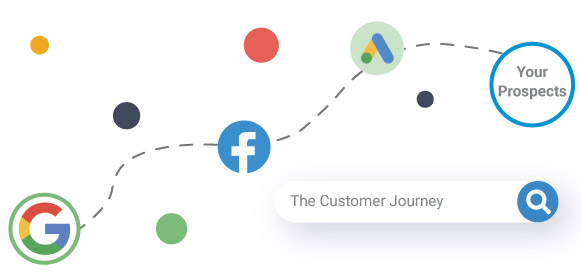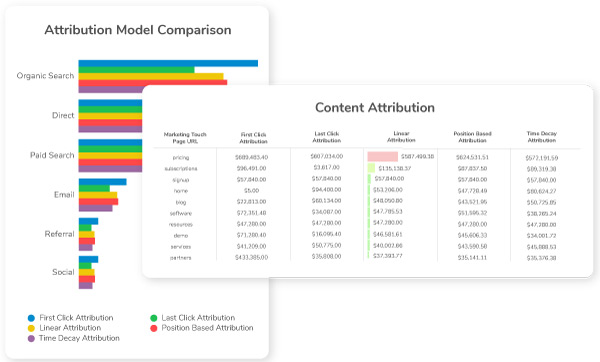The Meaning of Attribution in Marketing
January 3, 2022 •DJ Team

Often, marketing strategy can feel like casting bottled messages into the ocean, with the hope they reach an audience that will act on the instructions inside.
When you lack transparency in your marketing structure, you never know what strategy is reaching your target audience. This leads to inconsistent, inaccurate ROI on ad spend, and the sales you do earn can’t be attributed to any specific ad or promotion.
Marketing attribution helps identify which interactions pull your customers closer to buying your products or services. And the more you can learn about the sales cycle from the attribution model, the better the marketing attribution platform.
When you learn more about what sways your customers, you narrow the gap between ad spends that contribute to sales and those that fall flat.
What is Attribution in Simple Words?
Attribution means you give credit where credit is due. In marketing, attribution comes down to assigning value, or weight, to the interaction with a customer that contributed to a sale.
Customers typically have several interactions, or touchpoints, with your brand before ever making a purchase. How do you know which interaction sealed the deal and led to a conversion?
It might have been one interaction. It might have been multiple interactions combined. But attribution works to assign value to know what information and rhetorical appeals affected that final buying decision.
Think about gratuity at your favorite restaurant as a metaphor: when you tip a waiter, you’re typically satisfied with more than just the service.
You were happy with the overall experience: the food was likely well-prepared, the ambiance of the room was comfortable, and you weren’t interrupted by other guests. Hence, the gratuity tip. Multiple factors affected if you tipped, and how well you tipped.
The restaurant metaphor helps identify attribution marketing examples in our own businesses. In short, attribution helps you figure out what experiences contribute to the sale.
When Should Attribution Be Used?
Attribution makes marketing tactics more efficient. The more we learn about our customers and what interactions have a positive effect, the better we can control and increase ad spending in the right places. But the type of attribution model we use will tell us more about the typical sales cycle of a particular business.
Attribution is measured in two ways: single-touch and multi-touch models. Within these two categories are multiple models, and each uses different measurements to track customer interactions and assign value.
Single Touch Attribution Models
Single-touch attribution models assign 100% of a sale’s credit to an individual experience. Return to the restaurant metaphor: some customers will tip based on the service or food quality alone. Similarly, some attribution models are comfortable assigning all value to the first or last touchpoint a customer had before making a sale.
First touch and last touch attribution models are included in the single touch category. In these models, the first or last interaction a customer has with your brand receives the credit when there’s a sale.
For simple sales cycles, last touch and first touch models might provide worthwhile insight into your customer’s interaction with your brand.
But for brands who rely on a multi-pronged marketing strategy with multiple touchpoints, this doesn’t paint a complete representation of the multiple factors that affected a customer.
Multi-Touch Attribution Models
Multi-touch attribution models provide a more comprehensive understanding of how touchpoints affect a customer’s path to making a purchase. Customers typically interact with brands several times, across multiple touchpoints: ads, content, promotions, newsletters, social media. What if you could see how each interaction contributed to a conversion? Or which had no effect? You could then focus on the most effective channels and dedicate less time and spend to the ones that aren’t working.

Linear and data-driven attribution are multi-touch models that distribute fractional credit to multiple customer interactions. Linear models distribute credit evenly across all customer interactions. In data-driven attribution, machine learning creates algorithms to track the sales journeys of hundreds or thousands of customers to learn more about what interactions are likely to lead to a sale.
Why Is Marketing Attribution Important?
Measured strategy informs improvement. Attribution creates a visible return on the investment of your ad spend, so you learn how to dial in your most effective strategy, and get buy=in from leadership to continue in the right direction.
With automated account-based attribution software, DemandJump helps you track and account for touchpoints and interactions with your customers. This information can inform your marketing strategy moving forward, helping you learn more about current customers and develop ways to connect with more. See how keywords drive searches, which ad spends contribute to a conversion, and get a comprehensive look at your strategy’s effectiveness.

Interested in learning more about how DemandJump’s marketing attribution platform works? Get a demo today to see how we can help you measure your marketing performance and improve it through data and actionable recommendations.
Featured Articles
Categories
- Attribution Tracking (13)
- Channel Optimization (11)
- Consumer Insights (68)
- Content Marketing (251)
- Data Science (8)
- Digital Marketing (6)
- Digital Transformation (26)
- Enterprise (10)
- Lead Generation (14)
- Market Intelligence (8)
- Marketing Analytics (39)
- Marketing Attribution (57)
- Marketing Management (153)
- Marketing Operations (86)
- Organic Search (222)
- Paid Search (52)
- Pillar-Based Marketing (63)
- Programmatic Advertising (9)
- SaaS Content (14)
- SaaS Marketing (29)
- Search Marketing (111)
- SEO Keyword Research (28)
- SEO Pillar (18)
- SEO Strategy (46)
- SMB (5)
- Website Content (12)


